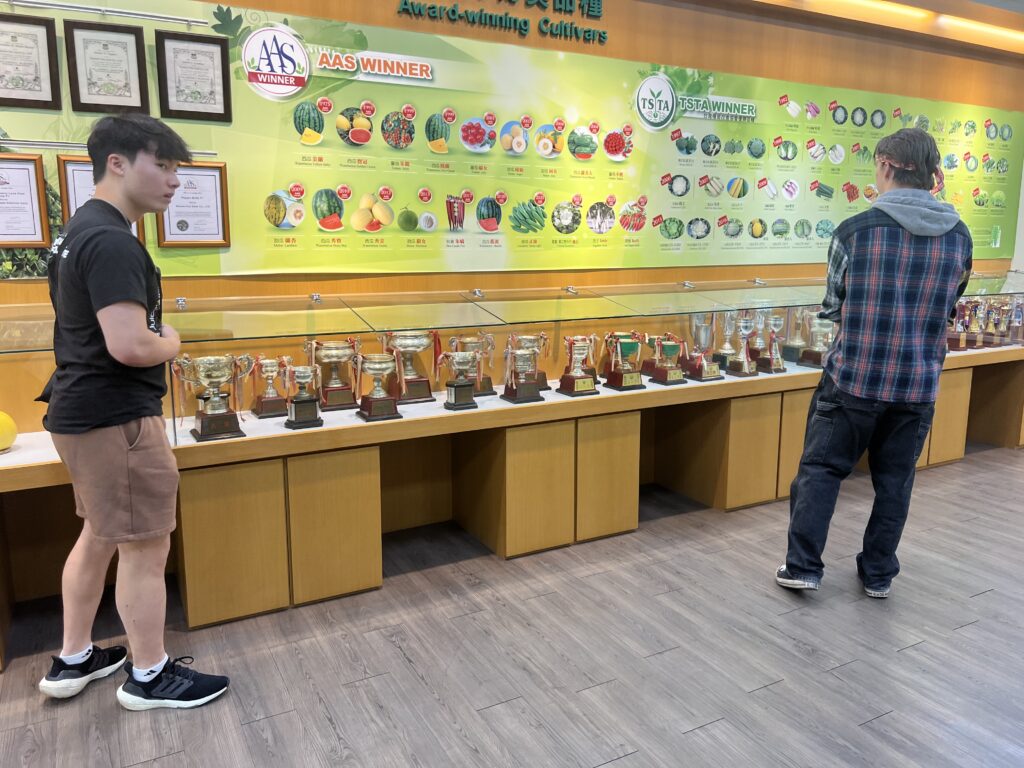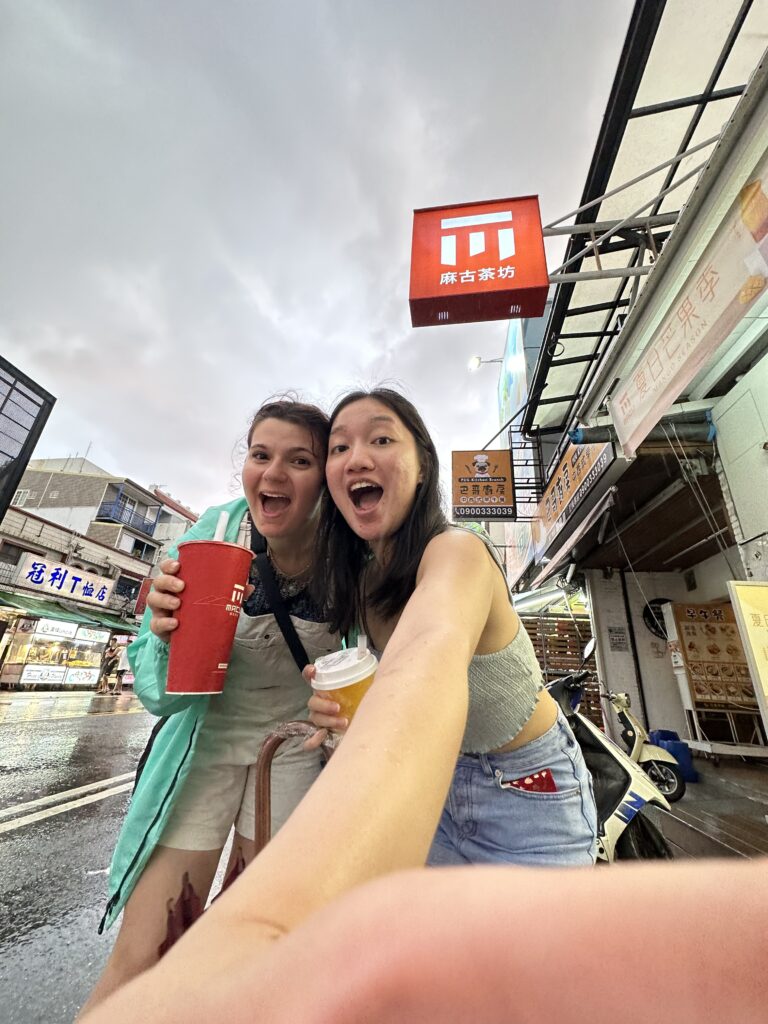Before walking into the private companies headquarters I was able to learn lots of background info from their brochure and website! Compared to past places we visited you could definitely tell that these operations were more international and commercialized from the large amount of operation and selling sites, awards, and seed products produced. I also noticed that communicating their company and its mission in English was also emphasized through each company members impressive presentations conducted in English, their pamphlets + information in their office completely translated to English, and even their introduction video being conducted in the English language!
So, first going over the highlights of their operations and history before getting into the mind blowing science of it all….as we learned from the tour of the facilities, Known-Your seed Co. was founded in 1968 by Mr. Wun-Yu Chen, a man who studied vegetable breeding in Japan before founding the company. The man known as the “watermelon king” began his operations through cross breeding horticultures and the company has carried on and improved his methods ever since. In 1975 they won their first AAS (American Agriculture Society) award, and have won many since – ESPECIALLY for their watermelon, a fact they were very proud to share. In addition to their operations of selling seeds within global markets, they also help in giving farmers the knowledge they need in planting and growing vegetables and fruits. Throughout their subsidiaries they have in 9 countries they have demo fields where they are able to teach farmers how to grow the food on land like their own. Lastly, their company also participates in charity work where in 1992 Known-You Social Welfare Foundation was registered as a non-profit. Specifically, they have donated a hospital in Myanmar to help poor farmers in need as well donating their net profits in places like India and Thailand. It was clear what a success this large company has become as our tour guide informed us that they sell in 154 countries!
When it comes to making and choosing which fruits they would like to mass produce and sell there are many steps of R & D that are involved. Throughout their process they have a giant data bank where all of their information is stored – i.e the genotypes of all of their hybrids mass produced and sold, the seeds of each hybrid crossed (even if not their desired outcome fruit that they market), and other information about each plant such as phenotypic traits.
Now – onto the science :0 (Thanks Prof P for recap + science lesson on the bus, def made this part easier!!)
As they’re intro video states, in order to create their seeds they combine classical breeding techniques with modern technology. Their overall mission stated that they wanted to introduce new technology to increase breeding efficiency and remove breeding bias with the goal of creating commercial fruit with advantages traits like a sweeter taste/larger size. With their technology they are able to cater to different global markets and the needs of consumers in different countries to create fruit that they specifically enjoy. Within the discussion they made sure it was clearly understood that the work they were doing was not GMO related. (As Professor Pokrywka explained to us on the bus, GMOs are foods that have changes in their DNA which doesn’t exist in any known strain of the plant and could never actually occur in nature. These plants at Known-Your Seeds co. are not genetically modified as two parents are simply being bred to produce offspring and the research being conducted focuses on choosing the best parents and creating the best version of these naturally occurring offspring). First discussing the breeding technology introduced the presenter discussed image analysis, spectrum prediction exploration, and sensors monitoring. With spectrum prediction monitoring the company is able to learn whether their seeds will germinate without actually conducting an invasive experiment. With sensor monitoring in their fields they are able to connect all their systems and collect and record environmental parameters – with this knowledge they can learn which conditions are best for germination and growth and record the information. Within the Biotechnology lab they discussed services such as plant tissue culture, double haploid technology, embryo rescue culture, and pollen storage technology. Breaking down each of these, double haploid technology is able to essentially able to replicate the genetic material of a plant that only contains one copy of genes (a haploid) so that the second copy is identical (with two sets of DNA material they are now a diploid). This is important as they are able to make every trait homozygous (meaning it is either all dominant (AA) or all recessive (aa)) and when crossing plants it makes it much easier to cross plants to their desired traits in fewer steps. Embryo rescue culture helps in overcoming interspecific hybridization while pollen storage technology allows for long term preservation of pollen sources which is important for crop pollination. Lastly, plant tissue culture is able to clone plants by taking a piece of one plant and placing it on a special substrate of agar with nutrients and allowing it to grow – this is importantly used in plants that gave unique breeding practices.
For me, I was most interested in the work being done in the molecular lab which is, in my opinion, some of the most important being done in R and D as without this technique they would not know how to find the most beneficial hybrids they are looking for. Specifically using foreground and background selection in the context of marker assisted development they have been able to create they’re unique fruits and sell their seeds. With background selection, scientists are looking for a plant that produces fruit that has great/desirable qualities (for example a plant that produces sweet and large watermelon) but lacks an important trait (for example is not good at protecting against diseases). Foreground selection is then looking for a plant that has that lacking characteristic (i.e is more disease resilient/immune) and every other quality of the plant does not have to be considered. These two plant species are then crossed to produce an F1 generation of offspring where 50% of their genes are inherited from one plant and 50% are intermitted from the other one. Then, doing a background cross (i.e crossing each of those offspring with the parent selected in the foreground selection) over and over you get to the point where most of the genetic material comes from the plant with every good quality while also containing the genetic material from the other plant for the selected trait like disease resistance. Within this process, markers are used in order to see what traits were inherited from each of the plants.
For the rest of the day we had a peaceful drive through stops at the beach and watching Jay gamble my 100 NT away before ending the rainy day with some boba!




